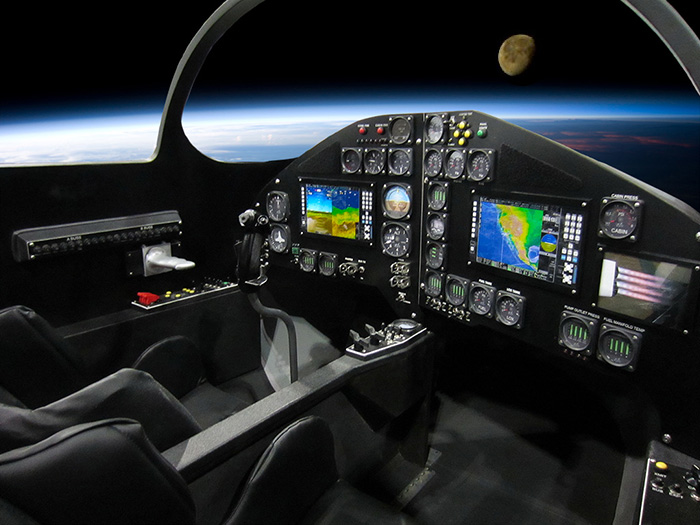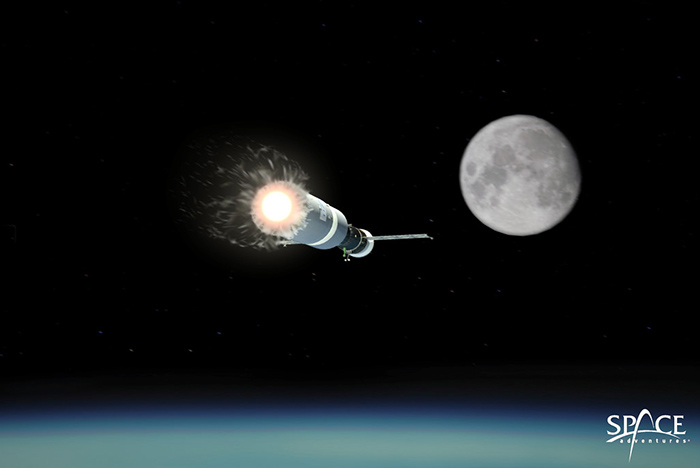
NASA said “no” to Sierra Nevada’s Dream Chaser lifting body, but Sierra Nevada Corporation is not giving up the fight to build a vehicle that can carry American astronauts into orbit and return to land on an airport runway.
Sierra Nevada has announced a new partnership with Paul Allen’s Stratolaunch Systems, which is currently developing the world’s largest aircraft to serve as the first stage for orbital launch systems. As part of this joint venture, Sierra Nevada is designing a scaled-down (75%) version of Dream Chaser that can carry three people and be launched from the Stratolaunch aircraft. The vehicle will also be capably of flying unscrewed space missions (similar to the US Air Force’s X-37 spaceplane), as well as “light cargo transportation or suborbital point-to-point transportation.”
One possible customer for suborbital point-to-point transportation might be the US military. At the beginning of the 21st Century, the United States Marine Corps studied a concept called Small Unit Space Transport and Insertion (SUSTAIN), which would use suborbital vehicles for rapid delivery of special forces to hot spots around the world. In 2002, a USMC “universal need statement” said, in part, “The Marine Corps needs a capability to transport small mission-tailored units through space from any point on the globe to a contingency at any other point on the globe within minutes…. The War on Terrorism highlights the need for flexible, rapid response options to contingencies around the world at their earliest stages.
Sierra Nevada is also continuing to market the full-size Dream Chaser. At the 65th International Astronautical Congress in Toronto on 30 September, the company announced the Dream Chaser Global Project, offering international customers a turn-key spaceflight capability including vehicle, astronaut training, and mission support.
NASA’s Commercial Crew program rejected Dream Chaser in favor of two capsules, Boeing’s CST-100 and SpaceX’s Dragon V2, in a decision announced on 16 September.
Boeing won out over Sierra Nevada even though its bid was $900 million higher and proposal-scoring rules weighted cost as the primary criterion: equal to the other two criteria (mission suitability and past performance) combined.
Some observers have suggested that NASA may have made the decision based on “cost realism,” effectively rewarding Boeing for submitting the highest-cost proposal. Rumors say that Boeing, unlike SpaceX and Sierra Nevada, has invested very little of its own money in previous phases of the Commercial Crew program, relying almost entirely on NASA funding. Boeing has also made less progress to date, producing mostly paper, while SpaceX and Sierra Nevada have been building actual hardware.
Sierra Nevada has filed a formal protest, which will be evaluated by the Government Accounting Office. As a result, NASA Commercial Crew contracts are on hold until the GAO completes its investigation, which may not occur until January. Sierra Nevada is not betting the farm on a positive outcome of that protest, however.
Sierra Nevada’s loss does not really come as a surprise, however. NASA telegraphed its view of Dream Chaser in the last phase of Commercial Crew contract awards, in August 2012, when Sierra Nevada was reduced to half funding. Arguably, the decision was made two years ago and NASA was simply going through the motions this time around.
The “capsule mentality” has dominated NASA’s thinking since the days of Project Mercury. NASA’s Commercial Crew program has rejected space planes not once, but twice. Orbital Sciences Corporation proposed a similar vehicle, Prometheus, which didn’t survive the cut in 2012 even though it was based on work OSC previously did for NASA under the Orbital Space Plane program. (NASA ultimately rejected the wing design for Orbital Space Plane in favor of an Apollo-like capsule, which later became the Crew Exploration Vehicle, now known as Orion.)








